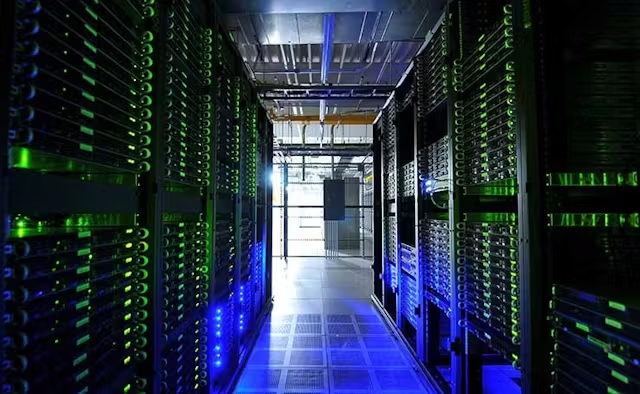Metro Data Centers face unprecedented challenges as artificial intelligence transforms the digital landscape. These urban facilities, strategically positioned in dense metropolitan areas, are at the forefront of a technological revolution that demands innovative solutions.
As AI workloads intensify, the pressure on infrastructure, energy consumption, and spatial efficiency has reached critical levels, prompting industry leaders to reimagine how these vital digital hubs operate.
The Growing Pressure on Urban Digital Infrastructure
The rise of AI has fundamentally altered the demands placed on data processing facilities. Unlike traditional computing workloads, AI systems generate dense, high-intensity traffic between GPUs, creating unique challenges for urban facilities.
These workloads don’t just consume more power; they behave differently, creating thermal hotspots and stressing cooling systems beyond typical enterprise IT requirements.
For urban facilities operating within strict space constraints and regulatory frameworks, this shift represents a significant hurdle. The metropolitan advantage of proximity to users comes with the disadvantage of limited expansion options and increasingly strained power grids.

The Energy Equation in Urban Settings
Cities like London, Dublin, Frankfurt, and Amsterdam are already experiencing grid capacity limitations. This energy crunch is particularly concerning as Europe’s data center electricity demand is projected to increase by 20% by 2030.
In an urban environment where every kilowatt is precious, efficiency isn’t just desirable, it’s essential for survival.
While much attention has focused on computing power and cooling systems, network switching emerges as a critical yet often overlooked component.
In AI-intensive environments, data constantly moves between GPUs, frequently requiring conversion between optical and electronic signals at each switch point. This optoelectronic conversion process consumes substantial energy and generates additional heat, further straining infrastructure resources.
Photonic Technology: A Game-Changer for Urban Facilities
Innovative solutions are emerging to address these challenges, with fully optical switching technology leading the charge.
By maintaining data in the optical domain throughout the routing process, photonic switches eliminate the energy-intensive optical-electronic conversions that dominate traditional switching methods.
Companies like UK-based Finchetto are pioneering packet-based optical switches that can be deployed at the rack level, perfect for dense urban deployments.
Their technology reduces energy consumption by up to 53 times while achieving latencies as low as 40 nanoseconds. For Metro Data Centers, this advancement offers a dual benefit: significantly reduced power requirements and improved performance metrics.
Transforming Urban Challenges into Opportunities
The unique positioning of Metro Data Centers within urban landscapes presents not just challenges but also distinct opportunities that remote facilities cannot access.
Heat Reuse: From Waste to Resource
Urban data processing facilities have a unique advantage in their proximity to other city infrastructure. The significant heat generated by AI workloads can be captured and redirected to supply energy to nearby buildings, schools, or hospitals.
This approach transforms what was once considered waste into a valuable community resource.
Successful heat reuse initiatives are already operating across Europe. In Helsinki, data centers warm residential districts, while London is exploring ways to use data center heat for social housing.
These programs not only improve overall site efficiency but also strengthen relationships with local communities increasingly important factor in obtaining planning approvals in congested urban areas.
However, to make heat reuse schemes viable, facility operators need to address inefficiencies in their operations. By optimizing networking through technologies like optical switching, operators can ensure that waste heat is reliably captured and channeled to where it’s needed most.
Integrated Urban Strategy
H3: Metro Data Centers Require Holistic Design Approaches
A successful metropolitan facility needs more than piecemeal solutions requires an integrated approach that carefully balances power, cooling, and networking in a cohesive system.
Advanced cooling technologies such as direct-to-chip and immersion methods are being combined with modular construction techniques that allow for flexible density adjustments within tight urban footprints.
Optical switching technology is enabling new design possibilities by allowing operators to reconsider rack configurations and cooling layouts.
By reducing the power and thermal load associated with switching, photonic technology gives urban facility managers the flexibility to deploy more computing power in limited spaces without overwhelming cooling systems or risking grid overload.
Future-Proofing Urban Digital Infrastructure
As AI continues to reshape the digital landscape, metropolitan processing centers will play an increasingly vital role in bringing AI services closer to users.
These facilities enable low-latency applications from autonomous vehicles to real-time language processing that simply cannot function with the delays introduced by distant processing.
Yet with city power grids under increasing strain and planning approvals becoming more difficult to obtain, these urban facilities must become more intelligent, efficient, and integrated with their surroundings.
Early investment in technologies like photonic switching not only reduces operational costs but also prepares metropolitan facilities to handle the growing demands of AI processing.
Expert Editorial Comment
In the rapidly evolving world of data processing, Metro Data Centers face unique challenges that require innovative solutions.
Their urban locations offer the advantage of proximity to users and infrastructure but come with constraints on space, power, and cooling that demand creative approaches.
By embracing cutting-edge technologies like optical switching and integrating with urban infrastructure through initiatives like heat reuse, these facilities can transform limitations into competitive advantages.
The future belongs to operators who view efficiency not merely as an operational target but as a strategic imperative in the AI era.

